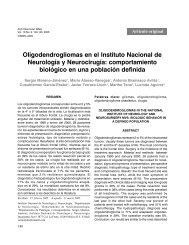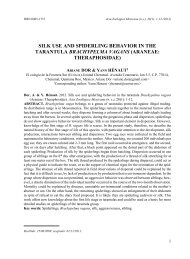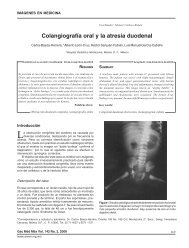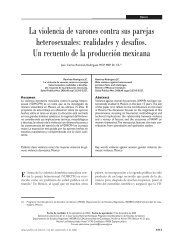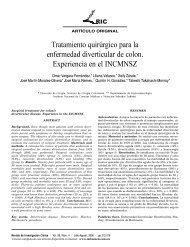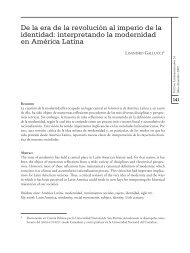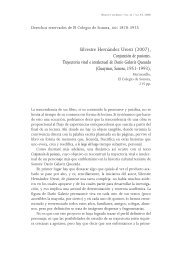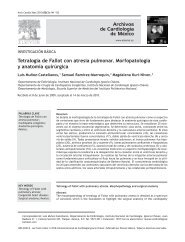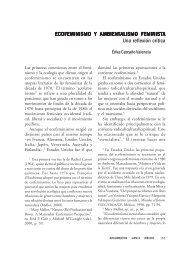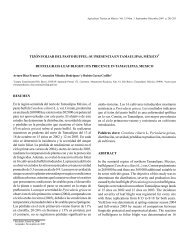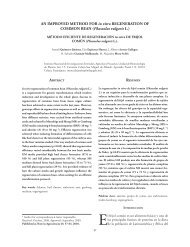View - ResearchGate
View - ResearchGate
View - ResearchGate
You also want an ePaper? Increase the reach of your titles
YUMPU automatically turns print PDFs into web optimized ePapers that Google loves.
Rev. Ciencia Forestal en México. Vol. 34. Núm. 105. Enero-junio de 2009<br />
ABSTRACT<br />
In the Southeast of Mexico, there are marketable plantations of different species<br />
of Eucalyptus where canker has been reported. The objective of this study was to<br />
provide the morphological and molecular identification of the species of eucalyptus<br />
canker causal agent in these plantations. Samples of infected bark, branches and<br />
new shoots were obtained from different parental sources growing in Oaxaca and<br />
Chiapas. The samples were incubated under the right temperature and humidity for the<br />
development of reproductive bodies. The pathogen agent was isolated and purified<br />
from in vitro cultures of mycelium colonies developed in the canker. The aspect,<br />
color, size and morphological characteristics of the reproductive structures were<br />
similar to those of Chrysoporthe cubensis. Nevertheless two types of reproductive<br />
structures were found in the field and laboratory samples, and it was necessary<br />
to verify if both belonged one kind of morphia. To precisely define to which species<br />
belonged the morphia, it was carried out a molecular analysis of the reproductive<br />
structures. The comparison of nucleotide sequences in the intergenic region of<br />
ribosomal genes of these structures, showed a similarity over 97% and when<br />
compared to the correspondent genes reported in the gene bank NCBI, pointed<br />
out that is only one pathogenic agent whose identity is Ch. cubensis. This pathogen<br />
presents dimorphism in this region, such characteristic could make the fungus<br />
more aggressive.<br />
Key words: Pathogenic agent, eucalyptus canker, Chrysoporthe cubensis,<br />
morfism, nucleotides, ITS ribosomal sequences.<br />
INTRODUCCIÓN<br />
El género Eucalyptus es originario de Australia y pertenece a la familia de las<br />
Mirtáceas, que comprenden una enorme diversidad biológica, con más de 700<br />
especies distribuidas en regiones, esencialmente de climas mediterráneos,<br />
tropicales y subtropicales (Obregón y Restrepo, 2000).<br />
Se estima que fue en el siglo XVIII cuando se inició la propagación de<br />
eucaliptos en diferentes latitudes del mundo, llegando a distribuirse con éxito en<br />
varios países de Europa, Asia, África, América y en algunas islas del pacifico<br />
(Obregón y Restrepo, 2000). En la actualidad, es cultivado a nivel mundial como<br />
una fuente de fibra para producir pulpa de celulosa.<br />
El cancro del eucalipto causado por el hongo Chrysoporthe spp. es una de<br />
las enfermedades más importantes en plantaciones establecidas en las regiones<br />
tropicales y subtropicales del mundo. La infección puede dañar hasta 50% de las<br />
20




